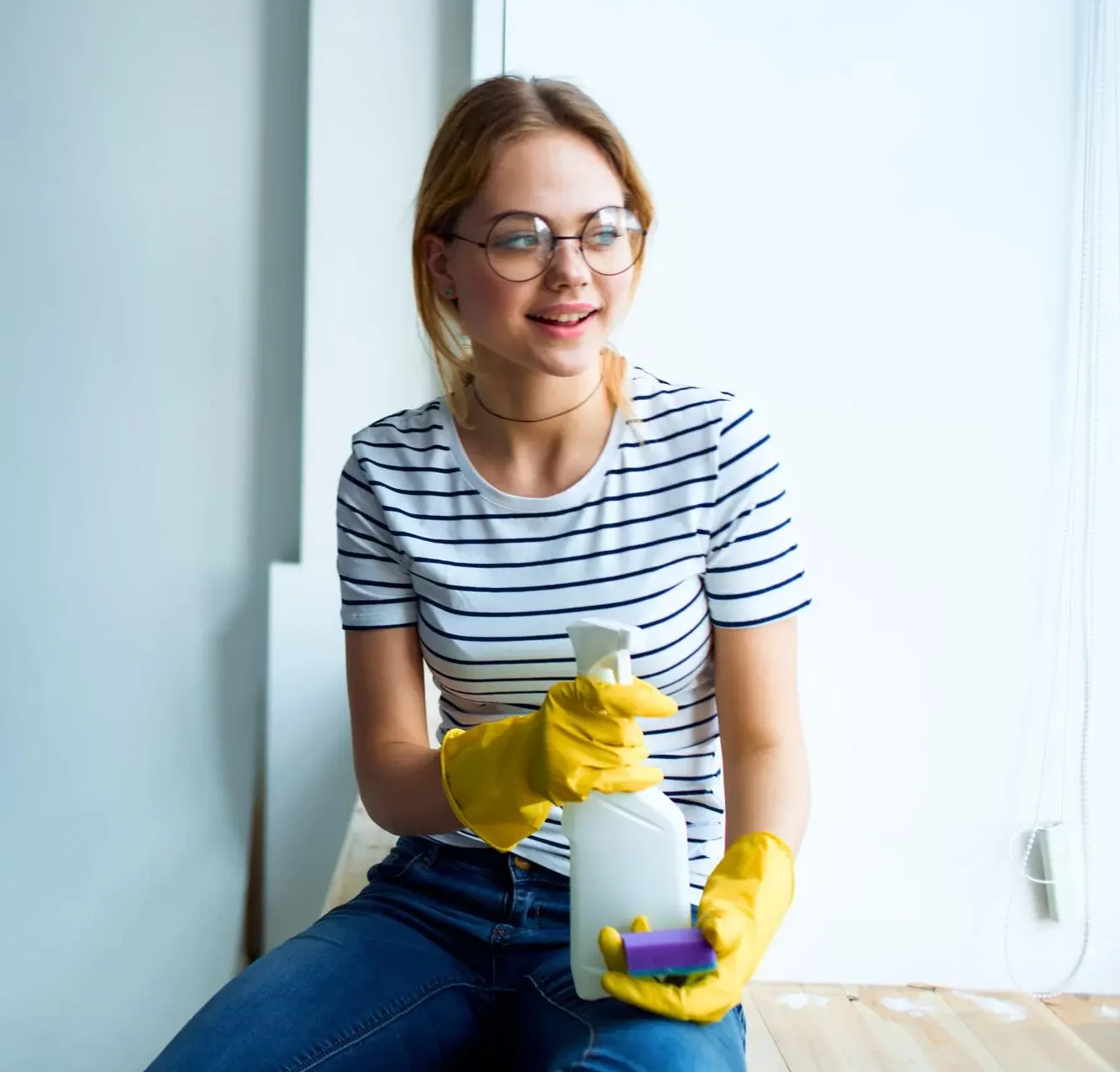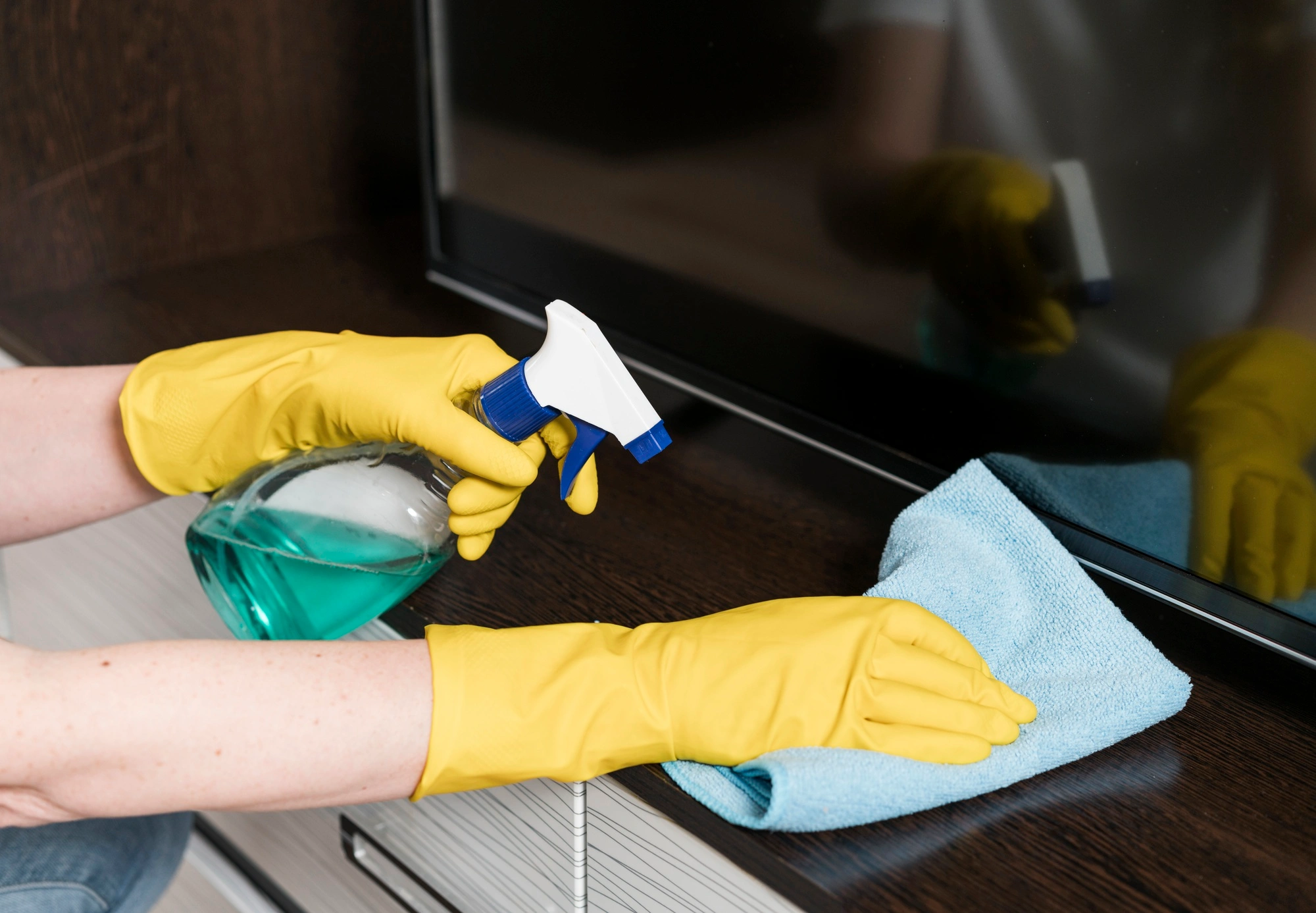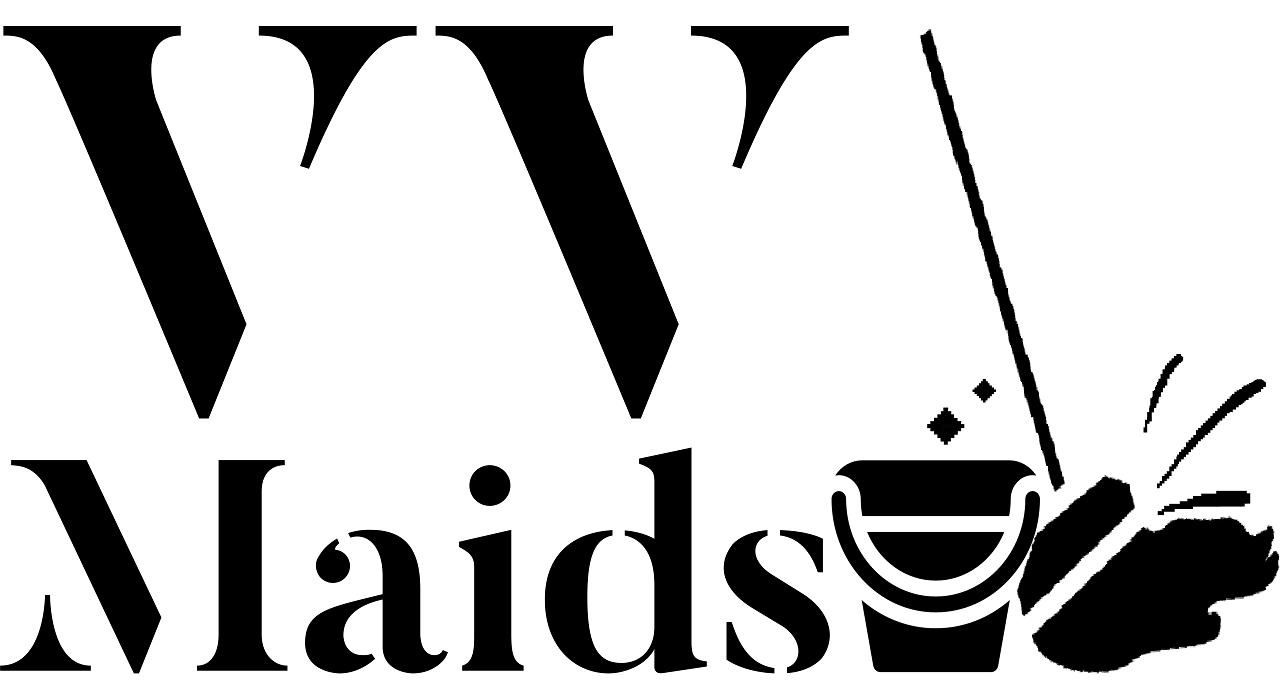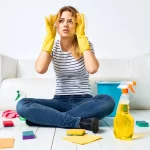Cleaning can be puzzling with all the cleaning tips out there on the internet. We’ve all heard about tips that seem good but turn out to be a waste of time or even destructive. Today, we’re going to uncover ten of these cleaning myths. Don’t worry, we won’t leave you clueless! We’ll also discuss some easy, no-nonsense ways to clean your home and belongings in an effective and practical way. So, get ready to say goodbye to the nonsense cleaning advice.

1. Newspaper Is the Best Way to Clean Windows
Using newspapers to clean windows is not the best thing you can do because they can transfer ink, leave lint and debris, prove ineffective against stubborn stains, and become soggy quickly.
Instead, use a soft microfiber cloth or a specialized window cleaning tool with a streak-free cleaning solution. Microfiber cloths clean well without leaving lint, and window cleaning tools have features like wipers and scrubbers. For the greatest results, start wiping at the top and then work your way down.
2. Use Lemon to Clean Faucets and Fixtures
Due to its acidic nature, lemon juice is not suggested for cleaning faucets and fixtures since it can potentially damage surfaces, especially those made of brass, copper, or marble, causing tarnishing or discoloration over time.
Instead, use safer options such as mild dish soap or specialized commercial cleaners. To avoid damage, always test any cleaning solution on a tiny area before applying it to the entire fixture.
3. Use Coffee Grounds to Deodorize the Fridge
Using coffee grounds to deodorize a fridge is not recommended because their strong aroma can mix with food odors, they may not be as effective as other options, they can create a mess, and they can absorb moisture.
Instead, consider using alternatives like baking soda or activated charcoal. Baking soda effectively absorbs and neutralizes odors without adding its own scent, while activated charcoal has superior odor-absorbing properties and is available in convenient, mess-free pouches or containers designed for fridge use, making them more practical choices for maintaining a fresh-smelling refrigerator.
4. More Detergent = Cleaner Clothes
Using more detergent doesn’t necessarily result in cleaner clothes because there’s an optimal detergent-to-water ratio that works best for cleaning. Using excess detergent can lead to problems like soap residue buildup, which attracts dirt and makes clothes appear dingy. It can also contribute to environmental pollution and waste. Instead of using more detergent, try these steps:
Pre-treat Stains
This involves treating stains on your clothing before putting them in the washing machine, which can help you achieve cleaner results and reduce the need for extra detergent.
Adjust Washing Machine Settings
By tweaking the settings of your washing machine, like opting for longer cycles or higher water temperatures when necessary, you can make your laundry process more efficient and eco-friendly.
Avoid Overloading
Overloading the washing machine can hinder its ability to clean clothes effectively. Ensuring that your machine isn’t overloaded allows clothes to move freely for better cleaning.
Choosing a detergent with enzymes designed for specific stains or fabric types can also improve cleaning efficiency without overusing detergent.
5. Use Hand Sanitizer to Clean Electronics Screens
Using hand sanitizer to clean electronic screens is not a good idea because many hand sanitizers contain alcohol or other chemicals that can damage the delicate coatings on screens, such as anti-glare or anti-fingerprint coatings. These chemicals can strip away these protective layers, leaving your screen more susceptible to scratches and smudges over time.
A practical alternative is to use a microfiber cloth slightly dampened with water or a screen-specific cleaning solution designed for electronics. Gently wipe the screen in a circular motion to remove smudges and fingerprints without the risk of causing damage. Be sure to power off the device before cleaning and avoid spraying any liquids directly onto the screen to prevent moisture from seeping into the device.

6. Use Toothpaste to Clean Silver Jewelry
Choosing toothpaste to clean silver jewelry is not the best option because toothpaste contains abrasive particles that can scratch and damage the surface of the silver. These scratches may not be immediately visible but can accumulate over time, leading to a dull and worn appearance.
Instead, you can create a gentle homemade cleaning solution using warm water and mild dish soap. Simply mix a few drops of dish soap in a bowl of warm water, soak the silver jewelry for a few minutes, then use a soft, non-abrasive cloth or a soft-bristle toothbrush to gently clean the jewelry. Rinse it thoroughly and pat it dry to restore its shine without causing any harm to the metal.
7. Use Cola for Cleaning Toilet
Cola may provide some cleaning power due to its acidity, but it can also damage the toilet’s components over time. The high sugar content in cola can promote bacterial growth and leave behind a sticky residue.
A practical alternative is to use a dedicated toilet bowl cleaner or a mixture of baking soda and vinegar. These options are designed for toilet cleaning, effectively removing stains, and are less likely to harm the toilet’s surfaces or mechanisms.
8. Use Eggshells to Clean Inside Glass Bottles
When thinking about cleaning the inside of glass bottles, eggshells might come to mind, but it’s not the best method because eggshells can easily break into small, sharp fragments, making them difficult to remove from the bottle and potentially leaving behind residue. Moreover, eggshells may not effectively scrub away tough stains or residue. Instead, you can use a bottle brush, which reaches into the corners and scrub away stains effectively, leaving the glass bottle clean and clear.
9. Use Bread to Pick up Glass Shards
Choosing to use bread to pick up glass shards isn’t a sensible option. It’s ineffective at capturing all the small, sharp pieces of glass. Glass shards can be dangerous, and using bread may leave behind numerous tiny fragments that can easily be missed, posing a risk of injury.
A safer and more effective method for picking up glass shards is to use tape or a damp paper towel, which can help capture even the smallest pieces and reduce the risk of injury from the remaining glass.
10. Microwaving Sponges to Disinfect them
While microwaving can kill some bacteria, it may not reach all areas of the sponge. So it’s better to replace sponges regularly.
In conclusion, dealing with the world of cleaning tips is difficult, but it is critical to separate fact from fiction in order to ensure effective and safe cleaning techniques. Our cleaning professionals at VV Maids, a cleaning company that offers office cleaning and house cleaning services in and near Commack, NY, uncovered ten popular cleaning myths to save you time and help you prevent damaging your stuff.
From cleaning surfaces with newspapers and lemon juice to believing that more detergent equals cleaner clothes, these beliefs can lead to poor results or even harm. Instead, choose reliable cleaning methods such as microfiber towels for streak-free windows, mild dish soap for fixtures, and specialized cleansers for certain tasks. By doing so, you can say goodbye to useless cleaning tips and maintain a cleaner, safer, and more efficient living environment.
Frequently Asked Questions
Can I use a soft microfiber cloth to clean windows instead of newspaper?
Yes, a soft microfiber cloth is a more effective option for cleaning windows. Newspaper can leave behind ink and lint, while microfiber cloths clean without these issues.
How can I ensure I'm using the right amount of detergent for cleaner clothes?
To achieve cleaner clothes, follow the recommended detergent-to-water ratio on the detergent packaging, adjust your washing machine settings, and consider pretreating stains for better results.
Should I power off electronic devices before cleaning their screens?
Yes, it’s crucial to power off electronic devices before cleaning their screens to prevent damage and ensure safe cleaning.
How often should I replace kitchen sponges for effective cleaning and hygiene?
It’s good to replace kitchen sponges regularly, about every one to two weeks, to maintain cleanliness and hygiene.

